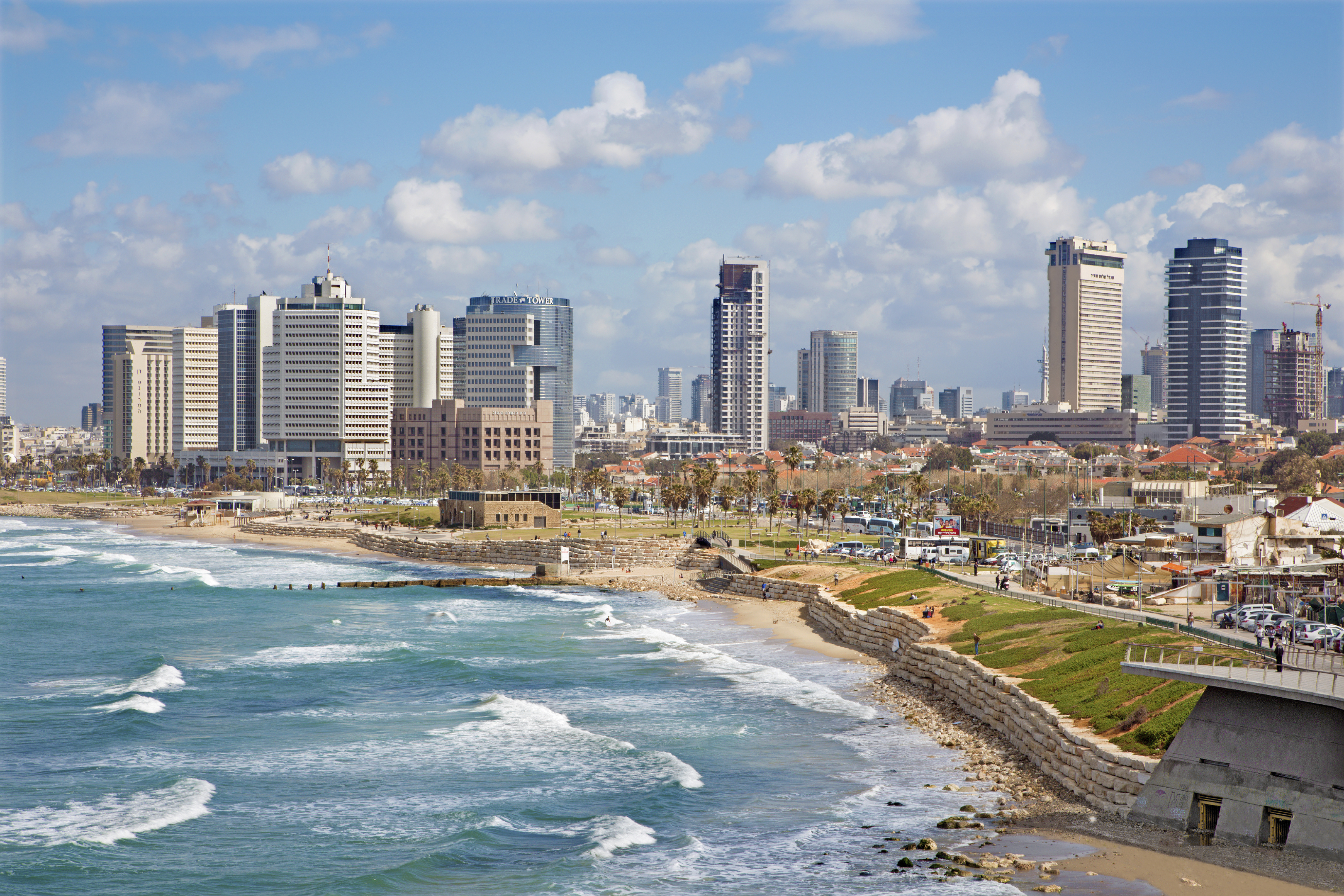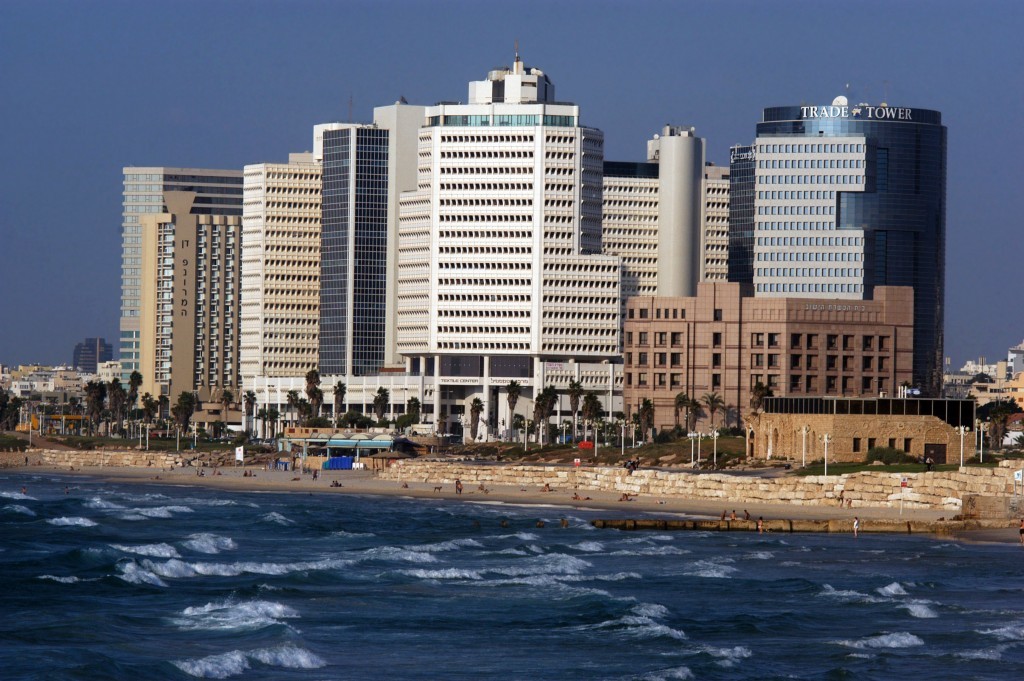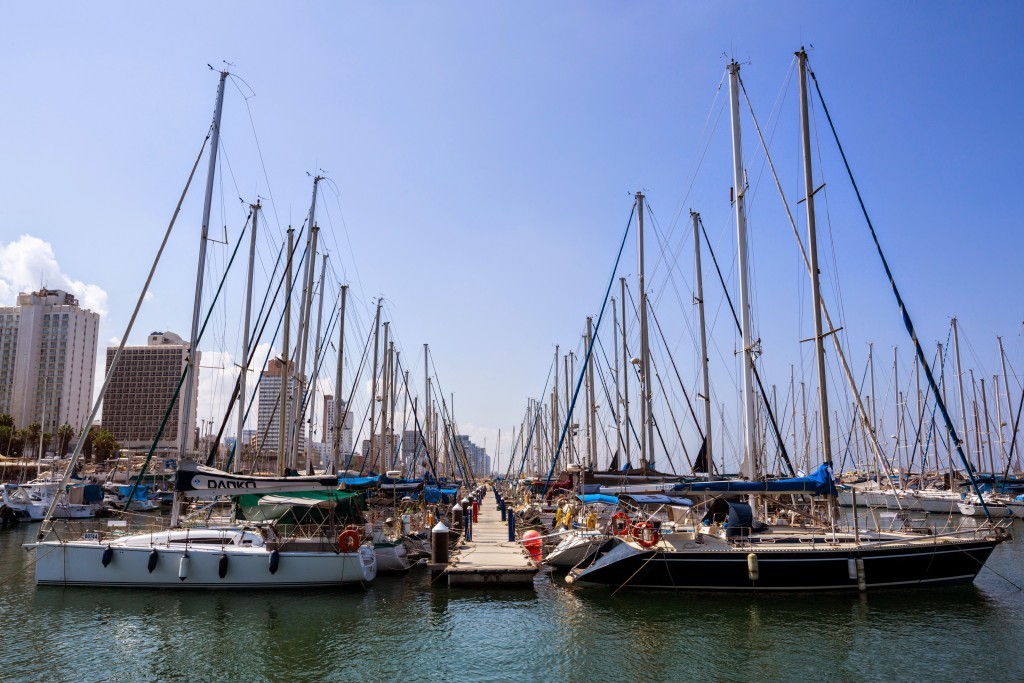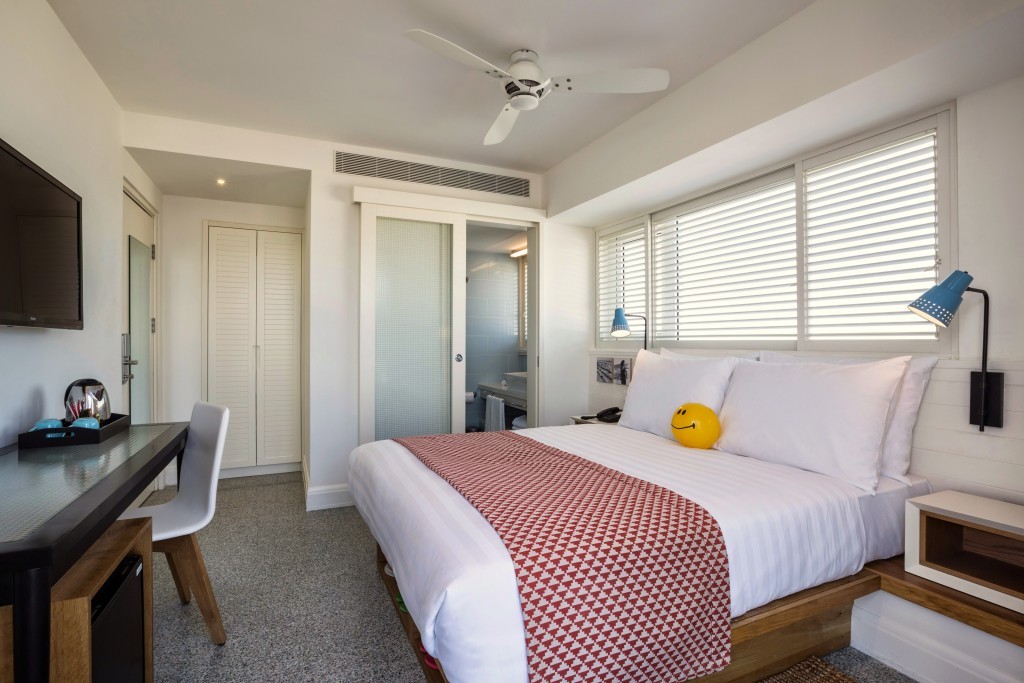
I’m a Tuscany kinda girl. I love history, ancient things, oodles of culture. And, let’s face it, Tel Aviv is one of the youngest capitals in the world.
Most of the Middle East leaves me cold. How can their cities compare with Paris, London, Edinburgh, Rome or Berlin? Well, they plainly just can’t.
But after four days in Tel Aviv, it has me wanting to go back again. Why?
It has a fabulous beach culture. It’s fun. It’s funky. It’s New York-on-Sea. A vibrant nightlife and a liberal feel that makes it very hard to believe that you are only 45 minutes’ drive from increasingly-Orthodox Jerusalem.
Although Israel is not a cheap destination, it’s worth every shekel because it’s so darned interesting.
I travelled in late October to Tel Aviv, and I loved every moment of it.
I stayed in a hip boutique hotel called Yam which has a great breakfast and a happy hour 5–7pm every day except their Sabbath (Saturday). It’s close to the port and the wonderful beach promenade.
Neighbouring Jaffa has been totally regenerated, with the old narrow streets and courtyards now another highly-desirable part of Tel Aviv’s urban tapestry.
There you find one of the most fascinating, unusual and interesting museums in the world.
It’s the home of the award-winning Israeli artist Ilana Goor. Her works have to be seen to be believed and include sculptures, furniture, lighting fixtures, practical implements, jewellery and fashion items.
Her house stands on a hill in Old Jaffa, with breathtaking views over the Mediterranean.
Entry is free and it’s a must-see sight.
Jaffa’s flea market is another well-known attraction of the area, with vendors selling a diverse range of unique, interesting products.
Don’t leave Jaffa without eating at Dr Shakshuka’s, a Jaffa institution.
Teenagers on National Service get big discounts here, so don’t be surprised if you’re surrounded by uniformed soldiers – male and female – carrying rifles as if they were a fashion accessory, which is a bit unnerving!
Order their tasting menu which consists of shakshuka – a North African dish of tomatoes, onions, eggs and sometimes meat, salads, crusty white bread, followed by meat stews and couscous, and finally chocolate and coconut cake. A veritable banquet for £15.
Back in Tel Aviv, Neve Tzedek is a cosmopolitan neighbourhood which was home to many artists and writers at the beginning of the 20th Century.
South of the Yemenite Quarter, this was the first neighbourhood in the “new” city of Tel Aviv, back in 1887 and full of chic shops and galleries.
Carmel Market is home to a wealth of stalls selling eastern food, meat and spices, and the Levinsky Spice market is also worth a visit. But my favourite was the fabulous indoor Sarona Market which has 90 stores, stands and restaurants.
It’s situated in the former German Templer colony of Sarona, a really cool part of town where locals enjoy café culture and picnics on a daily basis.
Another lovely area to wander is along Rothschild Boulevard, in the heart of the city, where you can admire the 1930s Bauhaus architecture that earned this area World Heritage status.
On Rothschild Boulevard, visit Independence Hall to learn more about the creation of Israel.
Among the exhibits is a fascinating picture from 1908 showing mostly desert where Tel Aviv now stands and you can see the podium where David Ben-Gurion declared independence in 1948.
Tel Aviv has its own version of London’s “Boris bikes”, with docking stations spread across the city.
They’re a great way to get around and there are lots of cycle lanes. You can hire one for £4 an hour.
The local council runs several free walking tours of the city (for a full list, see visit-tel-aviv.com).
And you musn’t leave without a dinner at Kimmel restaurant, where you can enjoy superb food in a 129-year-old restored building, which once belonged to a Turkish sheik.
You can’t talk about holidaying in Israel without thinking about security, given the troubles.
When I was there in late October three people were killed in Jerusalem, so it was decided not to go there. Tel Aviv is comparatively safe and has a far more Westernised, cosmopolitan vibe than its neighbour.
It’s always wise though to check the current situation by going to the Foreign Office website at gov.uk/foreign-travel- advice
If you do go to Jerusalem, avoid using the buses and light railway.
easyJet fly from Luton and their flights are infinitely preferable to El Al, in my opinion.
It’s four hours 45 minutes from London, and the airport at Tel Aviv has good shopping and eating outlets, and, of course, you’re eligible for ‘proper’ duty-free.
10 quirky facts about Tel Aviv
1. Tel Aviv has the world’s largest concentration of Bauhaus architecture, one reason it is known as The White City.2. Tel Aviv is a very new city and was founded in 1909 as the world’s first Hebrew-speaking city on the outskirts of the ancient port city of Jaffa.
3. The White City was designated a UNESCO World Heritage Site in 2003.
4. Tel Aviv Is the LGBT capital of the Middle East and every year visitors and locals enjoy the events of Pride Week.
5. Israelis are massive coffee fans but there are no Starbucks in the country as the chain doesn’t match Israeli tastes.
6. Tel Aviv is leading the vegan trend with a wide variety of vegetarian eateries and 200,000 vegans.
7. Roller-skating enthusiasts can join in with the Tel Aviv Rollers for late night roller-skating across a 25-30km route, finishing after midnight.
8. The city’s entire west side faces the Mediterranean Sea and boasts 16 beaches with free WI-FI!
9. Tel Aviv has more than 25 miles of bike paths, a quick way to avoid the traffic and get around.
10. Tel Aviv is home to more sushi restaurants per capita than any other city in the world outside of Tokyo.
Tel Aviv has a spectacular waterfront and lovely hotels.

Enjoy the convenience of having The Sunday Post delivered as a digital ePaper straight to your smartphone, tablet or computer.
Subscribe for only £5.49 a month and enjoy all the benefits of the printed paper as a digital replica.
Subscribe

